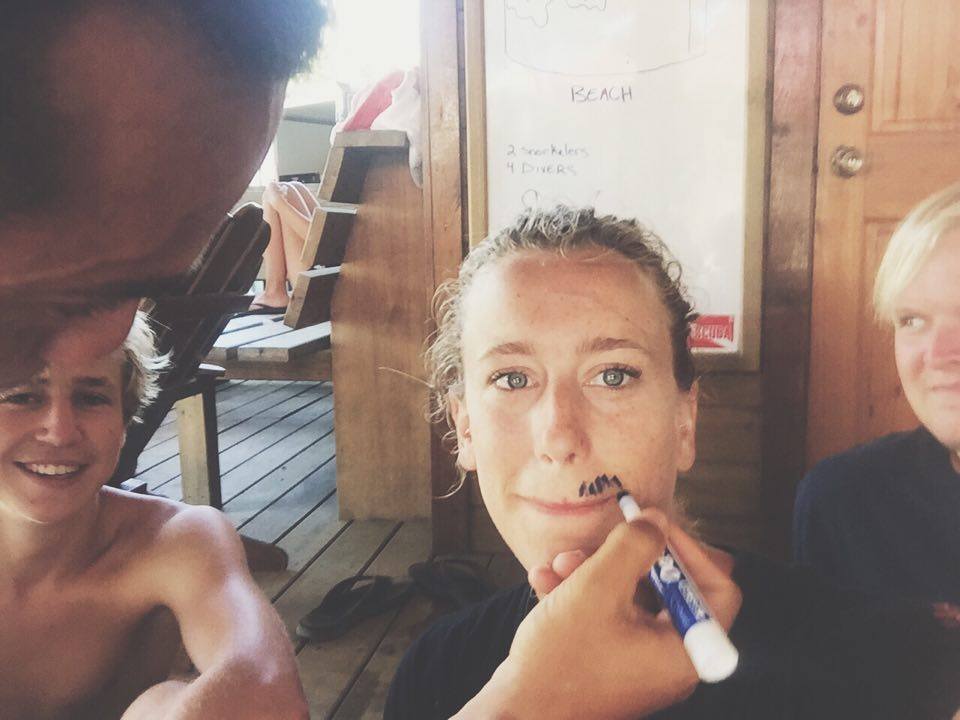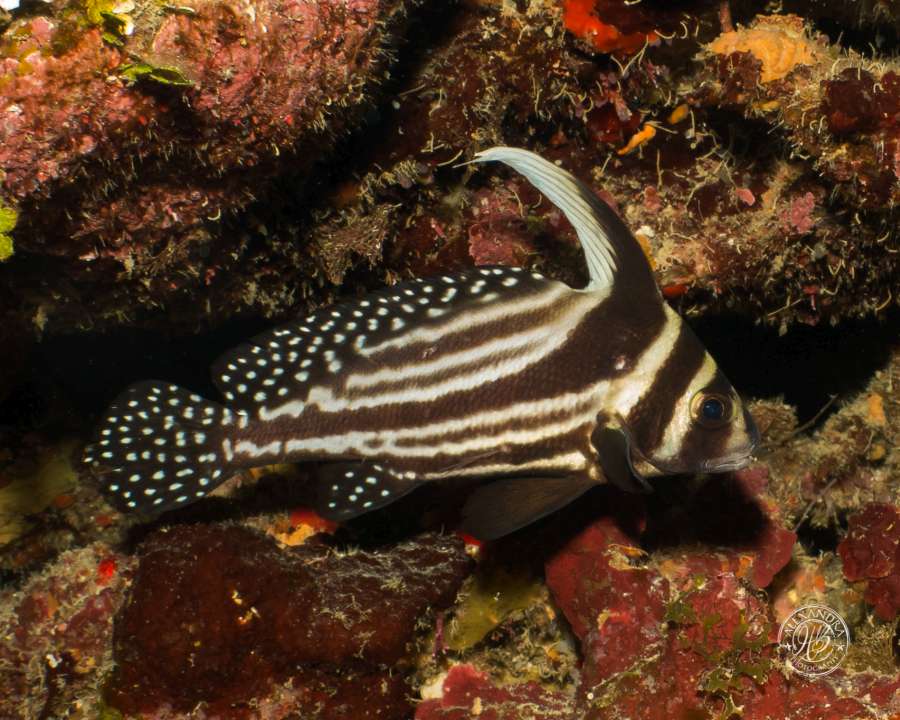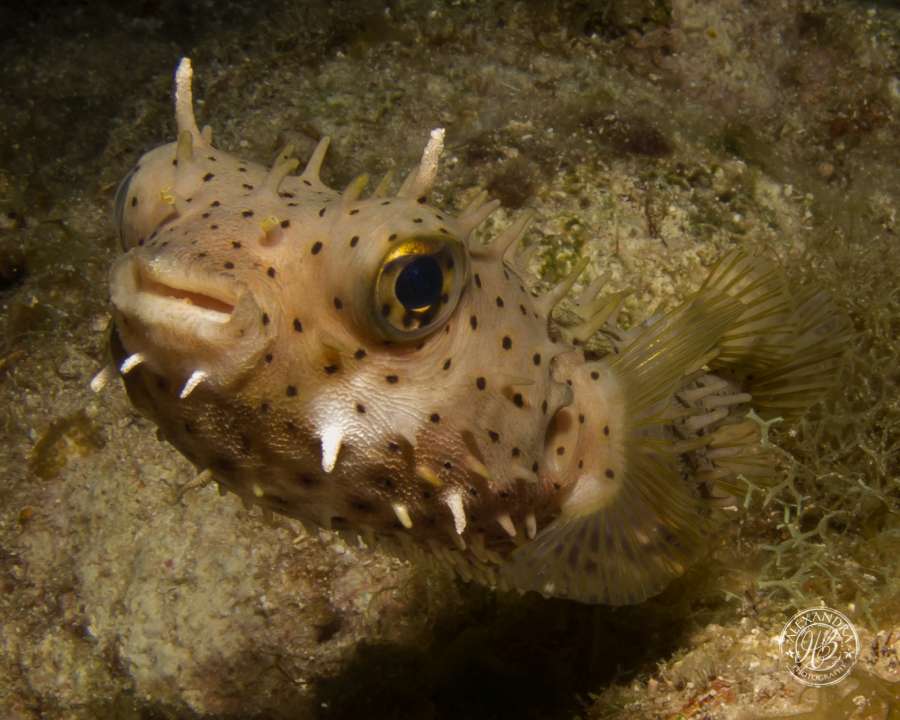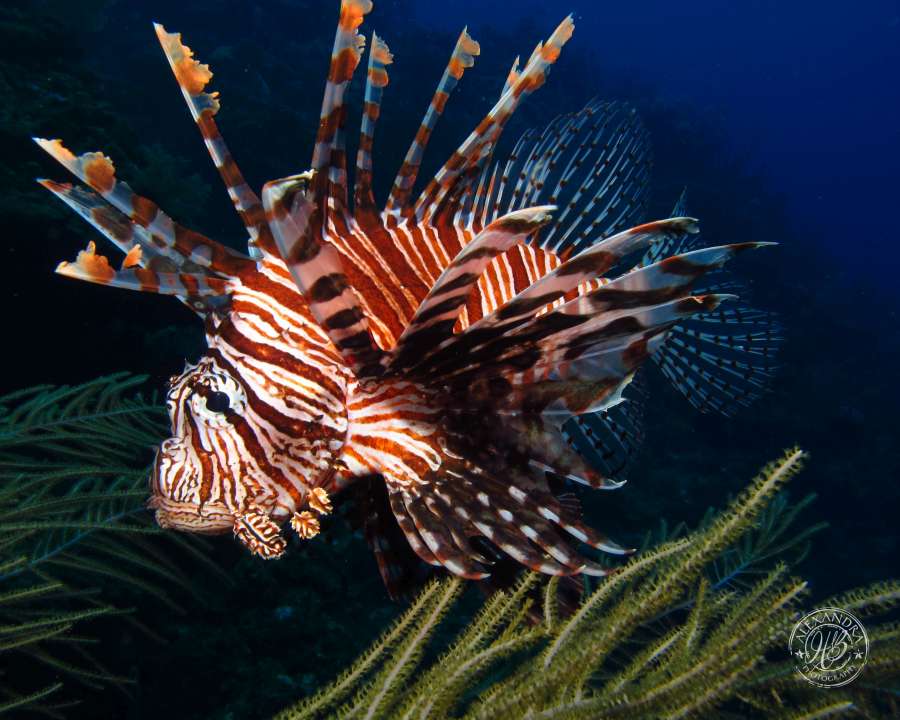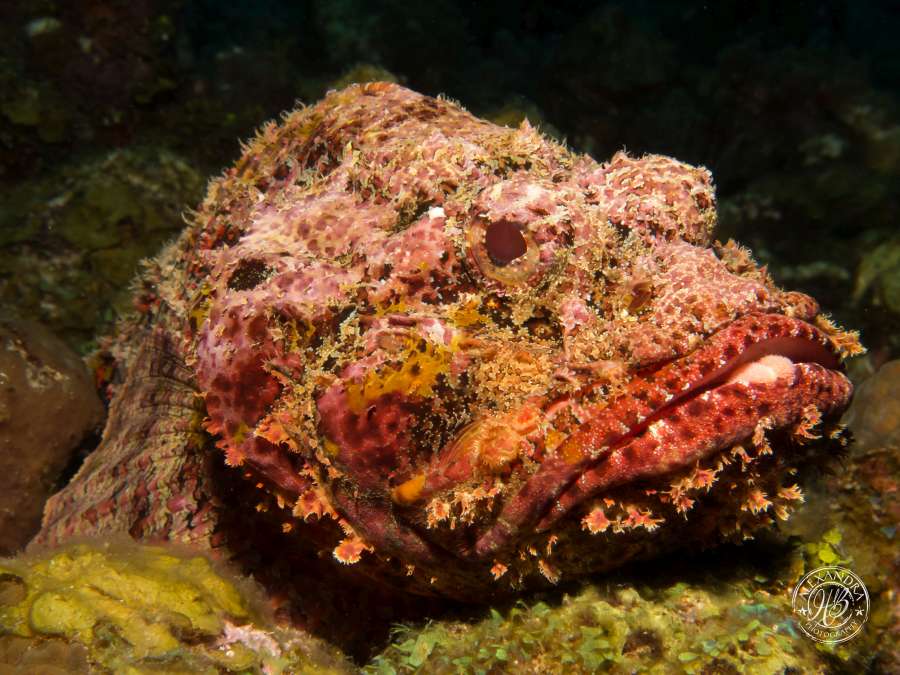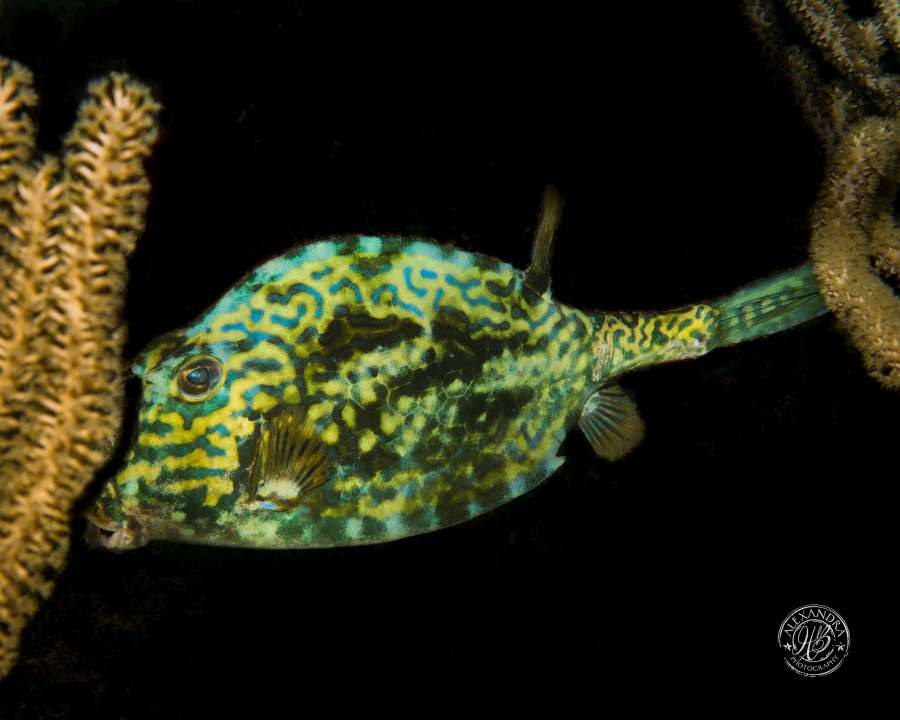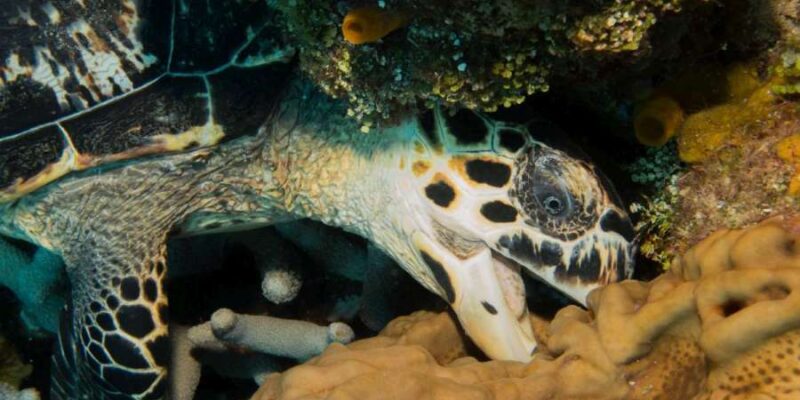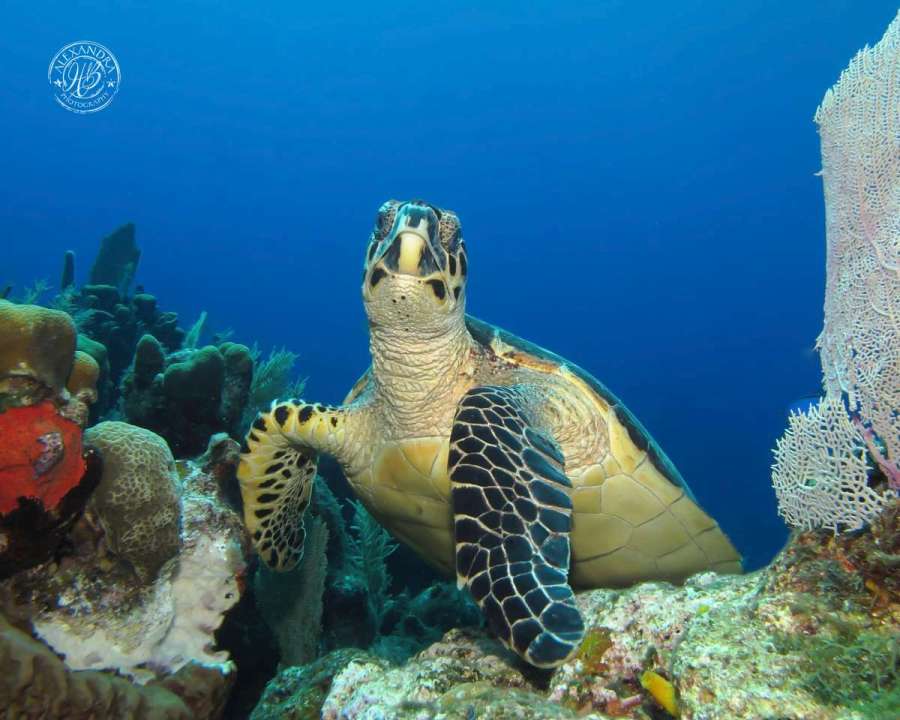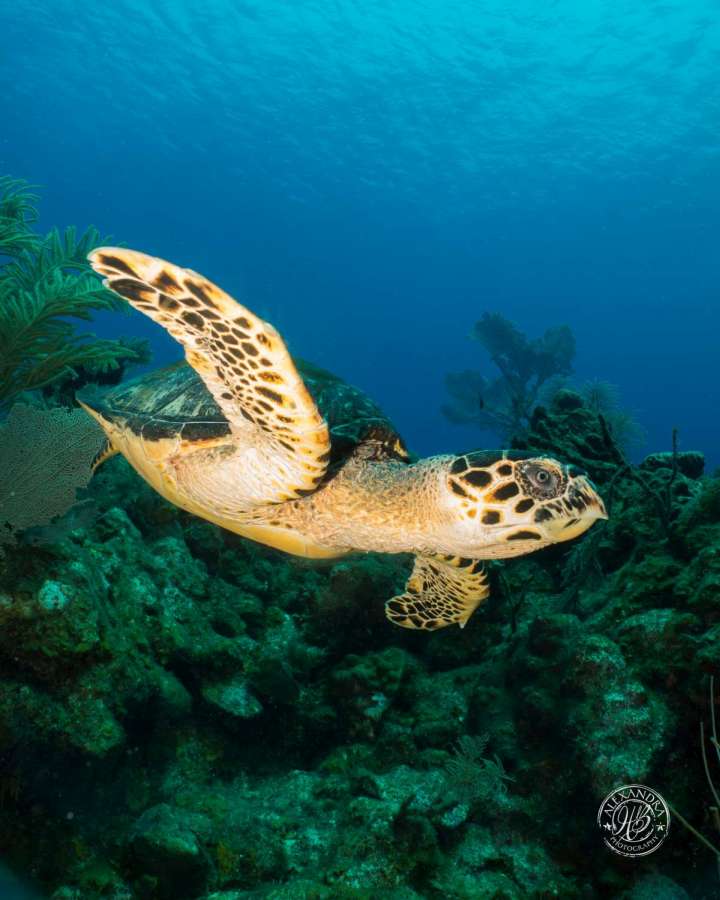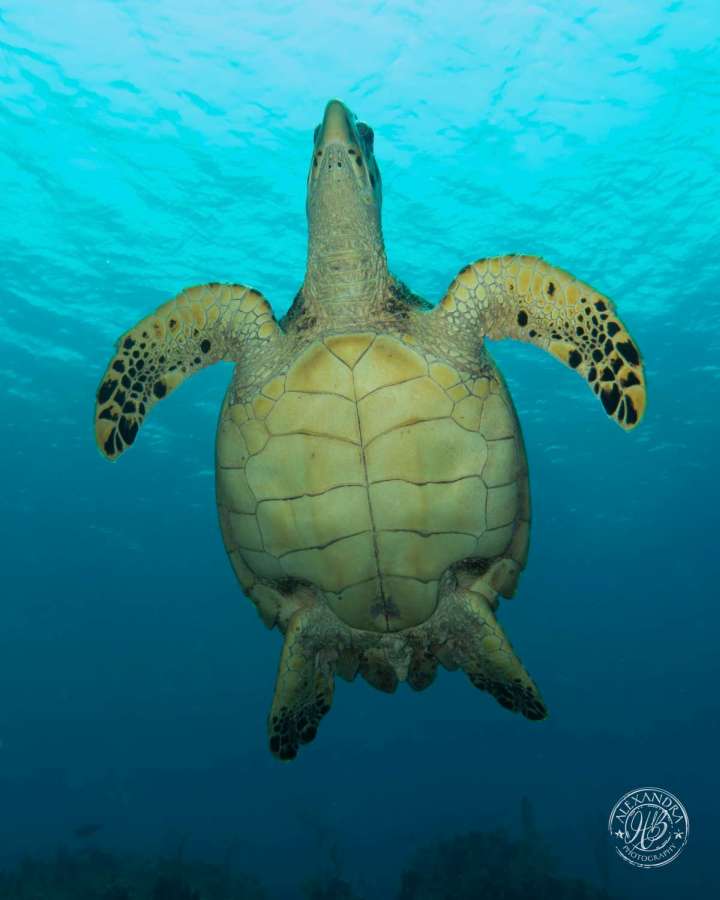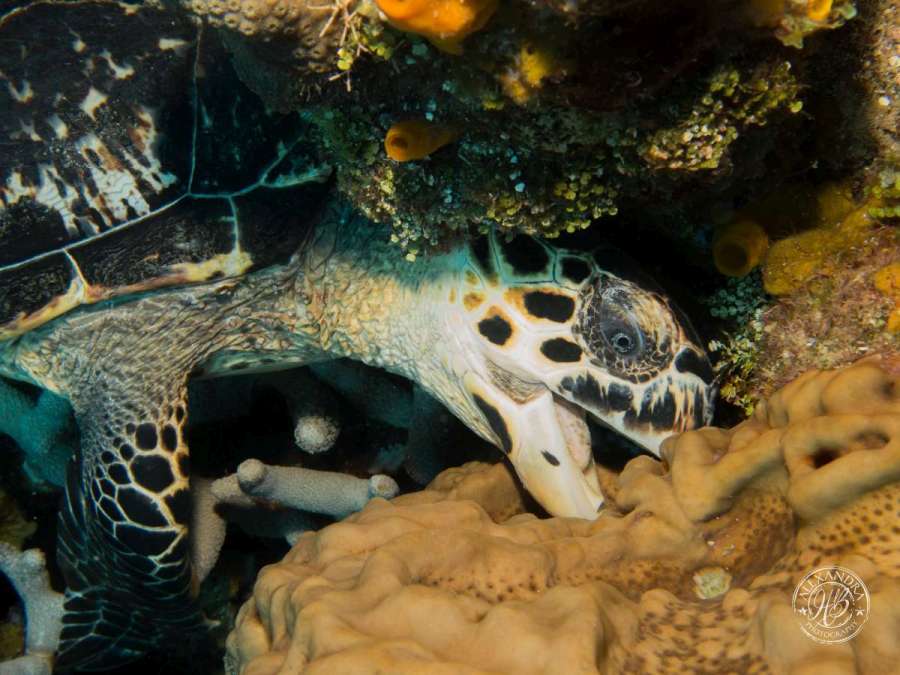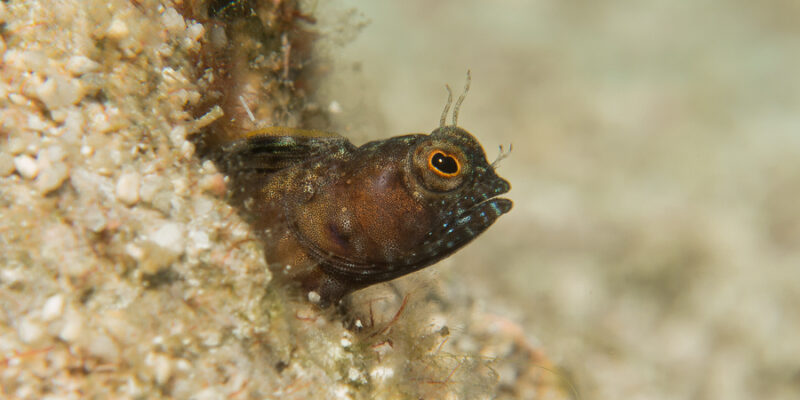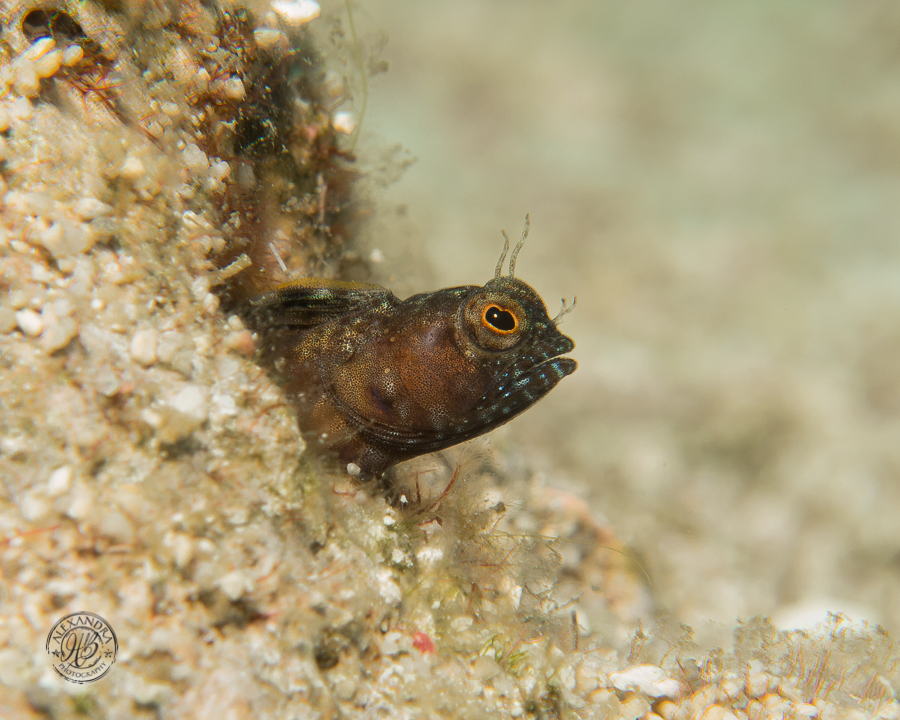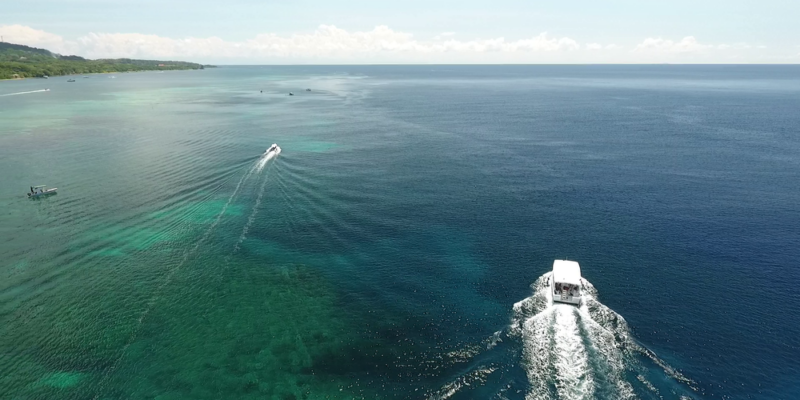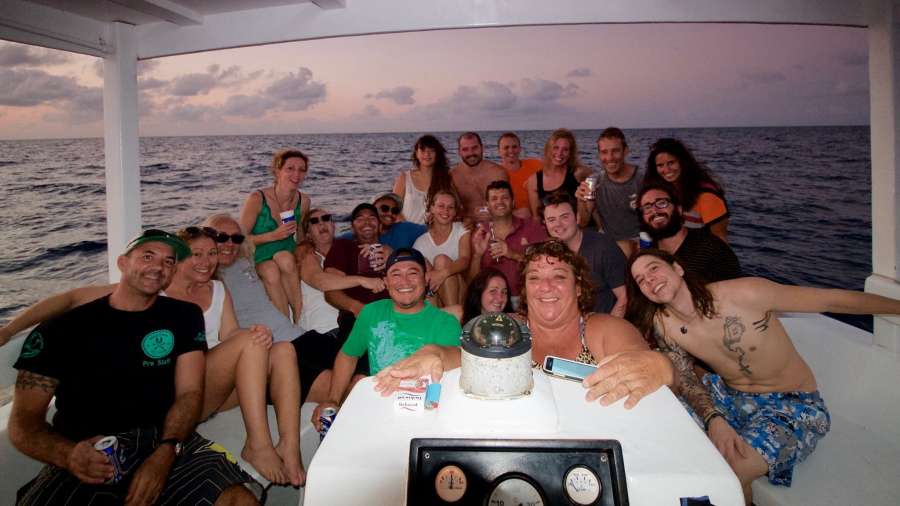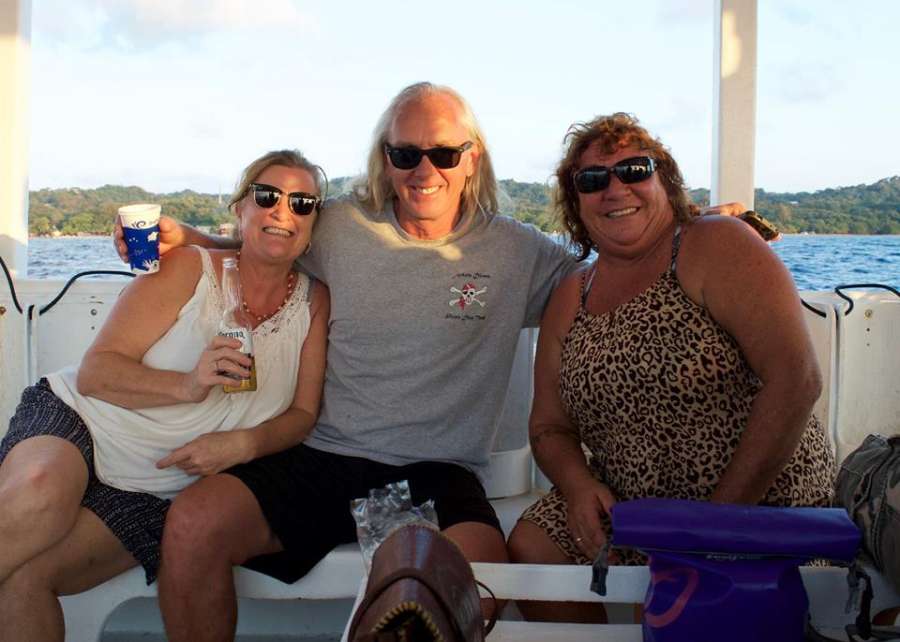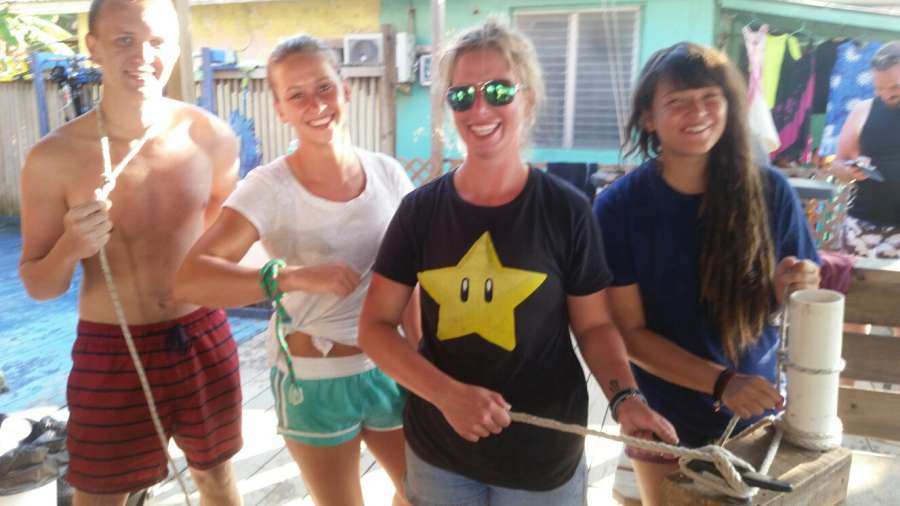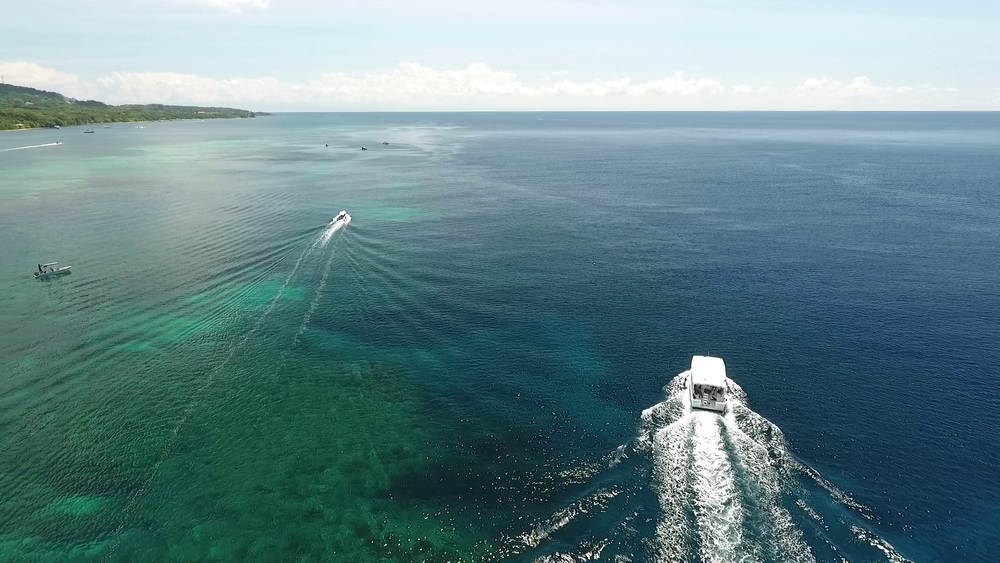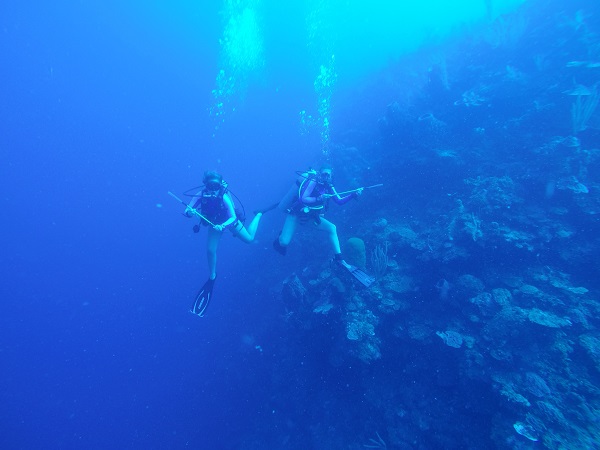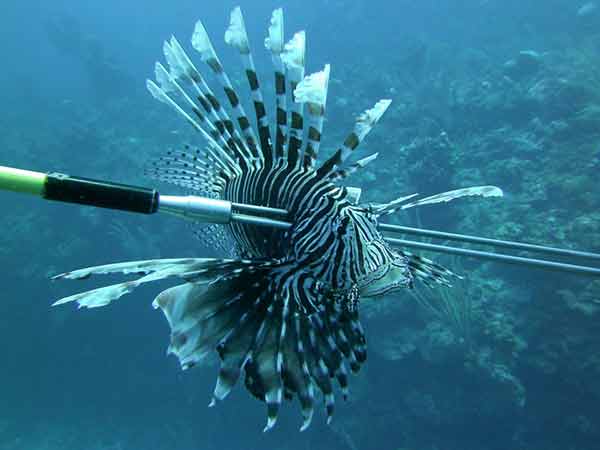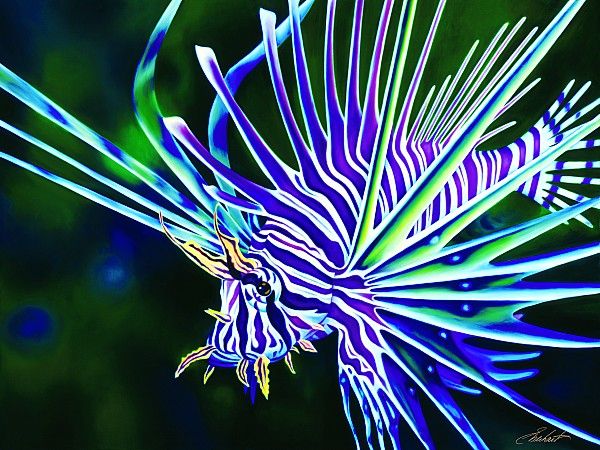Very rarely do us Dive Masters get a snow day, but that is exactly what happened one morning last week. Let me start with; diving during a rainstorm is a treat. You are going to get wet no matter what, so why let precipitation deter you from a good time? To be completely unaffected by any elements, submerged, 10, 20, 40 feet under water, floating on your back, looking up as drops disrupt the surface in a static, white noise sort of manner, is a calming, novel experience. There are dangers associated with diving during a storm, though very few actually influence behaviour underwater. Instead it is the entry and exit from the boat during a storm where most accidents happen.
On this day, last week, the water and wind were consequently too rough to even consider a boat dive from any side of the island, so the morning boat was cancelled, leaving 8 dive masters and 4 instructors puttering around the shop. A movie on skills (sans popcorn) was turned on for review and all dive masters settled in. Not 35 minutes later, the instructors interrupt the movie and being yelling about a missing diver. We all quickly recognize the interruption as a drill and even quicker scatter like cockroaches being chased by a flame. The next 40 minutes evolved into what can only be described as mildly controlled chaos. The missing diver was eventually located but was unable to be resuscitated as her bottom time was well over 20 minutes. The supervising instructors were disappointed, but as we were all reminded by our newest DM from Switzerland, drills like the one we just bombed, are the reason we all become better, as individuals and as a team. Rather than thash out every error we made, I’m going to isolate and highlight the correct response to an emergency which is an important refresher for all divers of any level.
Missing Diver/Search + Rescue
1. Assess the Situation
a. Before anyone moves in any direction, assign a lead. No matter what the conditions, you will be working as a team, but it is far less confusing and much more efficient to know who is delegating tasks and who should be aware of all information passing through.
b. Collect all information. Who is missing, Where were they last seen, When were they last seen, What are they wearing, How much air did they have left, Why did they go missing?
2. Create a Plan

a. The DM’s were informed of the missing diver in a classroom where we were watching a movie. We had a white board, multiple maps, a spine board, emergency oxygen, first aid, and various other useful tools, which you can be sure none of us took advantage of, because in the excitement we all just bolted for our equipment. What we should have done was draw the search area/dive site on the white board, and assign teams and search patterns.
b. Assign roles to your team. There were 8 of us. Perfect for one snorkel team of two, two scuba teams of two and one team of two to stay on land. Discuss search patterns, recall signals if a team finds the diver, assign gear, compasses and have the land team put emergency services on standby while checking the missing diver’s hotel on the off chance they have surfaced and gone home.
3. Implement
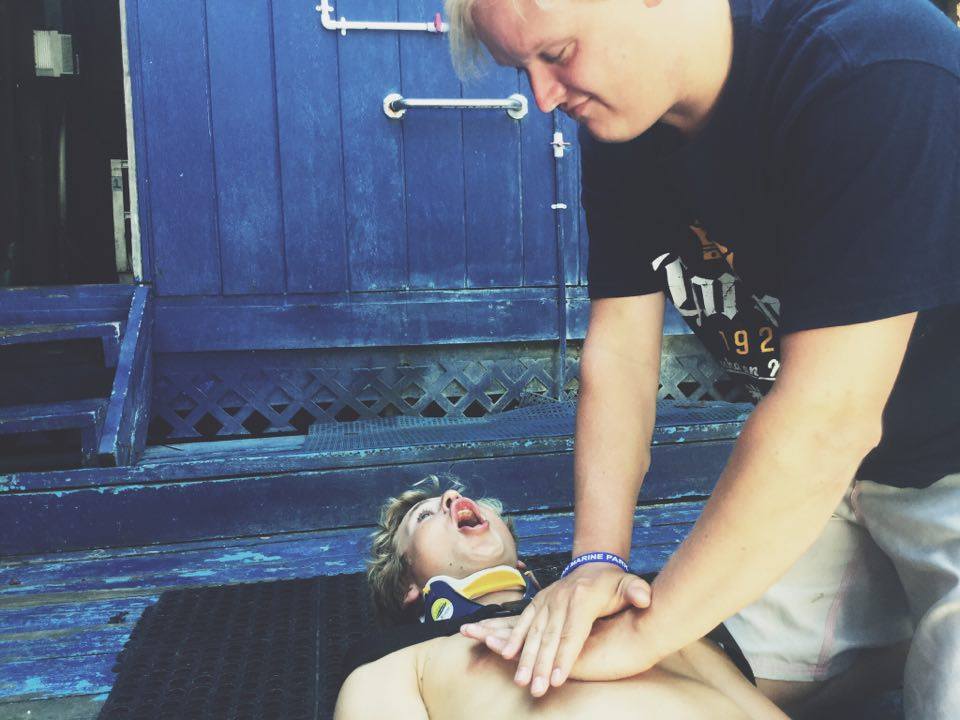
a. After this crucial first and second step, MOVE! Time is crucial for increased survival rates. Get your gear and get to the water. Have one more meeting before entering the water to ensure everyone is clear on the plan, or to accommodate any changes.
b. Communicate! When you create a plan stick to it. The easiest mistake to make is to become an independent member and abandon your team with dreams of becoming a hero.

c. Depending on the diver’s condition when found, the recovery standards will differ. The most experienced EFR trainee should work on the patient until EMS arrives.
At the end of the day, we all learned that you cannot succeed without the cooperation and help of your team. We became stronger as a group and will definitely be carrying this lesson into many other experiences.
